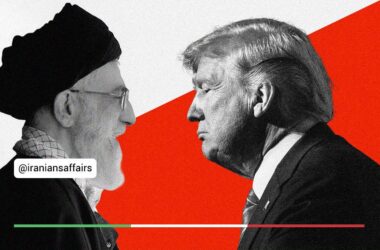As military clashes resume in Syria, many questions and uncertainties linger about their causes, objectives, backers, and future outlook.
For the estimated 200,000 fighters who had been stationed in Idlib and its surrounding areas for years without significant operational capacity, the new conditions presented a unique opportunity. Key factors, such as severe blows dealt to Hezbollah, sporadic attacks by Israel and the United States on pro-Assad bases, and the significant challenges facing both Russia and the Islamic Republic, created this environment. The prolonged survival of armed anti-Assad groups in Idlib (as well as Kurdish-controlled areas in the northeast) was untenable. Thus, it was not surprising that Assad’s opposition took action to disrupt the existing balance. This intention was undoubtedly the primary driver of the renewed conflict.
Countries like Turkey and Qatar may have exploited this will, and even the United States and Israel, albeit less likely, could have sought to leverage it. However, the motivations of various states differ, and the situation on the ground presents several plausible scenarios.
The prospect of eliminating all armed factions in the region appears far-fetched. Following Hezbollah, Hamas, and other smaller Palestinian groups like Islamic Jihad, the focus would shift to entities such as Iraq’s Popular Mobilization Forces, Yemen’s Ansarullah, Salafi jihadist groups, and Kurdish nationalist movements. A comprehensive policy would require either a political resolution to all military conflicts or the elimination of incompatible groups. For Syria, this could benefit Israel and the Western order. By exerting pressure on Assad, especially as he negotiates a return to the Arab League, there is a possibility of a serious agreement to regulate Assad’s government and neutralize or eliminate all militias.
The anti-Assad forces lack the strength to march toward Damascus or advance significantly toward Latakia. Even a potential victory in Hama would likely stall before reaching Homs. Expanding territories controlled by Assad’s opposition could, in the medium term, enable preparations for more significant offensives in the distant future. However, in the medium term, Russia and the Islamic Republic are likely to bolster Assad’s position.
The armed anti-Assad factions are ideologically dangerous and are predominantly listed as terrorist organizations by Western countries. The world has not forgotten the experience of ISIS, and Western governments remain unwilling to tolerate such groups, unlike their current grudging accommodation of the Taliban. Syria’s geopolitical situation differs starkly from Afghanistan’s peripheral zones.
Therefore, any territorial expansion by these groups will likely serve as leverage for negotiating an end to the conflict and the removal of non-state military forces. Israel, too, will oppose direct border proximity with these factions.
The involvement of the Arab League, particularly its more influential members, in the coming days could clarify the situation. This might even prompt Assad to reconsider his alliances with Russia and the Islamic Republic and seek assistance from the United States (along with Britain, France, and Israel) to craft a political solution for Syria and the broader Middle East in the post-October 7 landscape.
Turkey’s role is particularly significant. Over the past five years, it has been the primary supporter and protector of the armed anti-Assad factions. Beyond pressuring Assad and acting decisively against Kurdish fighters, Turkey could leverage this moment to reestablish its diminished regional influence and push for recognition as a regional power. Recent remarks by Hakan Fidan, Turkey’s Foreign Minister, suggesting the use of this situation to create a political agreement in Syria, align with this strategy. Turkey’s long-term backing of these armed groups has grown exhausting, and the prior status quo offered little clarity. A political resolution in Syria could integrate Islamist factions into Syria’s official politics, aligning with Turkey’s priorities, particularly its focus on combating Kurdish militants.
It appears that long-term support for Salafi jihadists and other armed factions in Idlib is nearing its conclusion. Conditions are ripe for changes in Syria, though uncertainties remain significant. Israel is unlikely to support the empowerment of these groups, yet it also opposes Hezbollah’s strengthening via Syrian channels backed by the Islamic Republic. Turkey must play its lone card strategically. Meanwhile, the United States and its European allies aim for a political and civilian order in the region. Saudi Arabia and other Arab states are showing considerable alignment in this effort.
While developments in Syria remain brutal and bloody, there seems to be a consensus on pursuing a political resolution this time. Even Russia and the Islamic Republic appear to be considering this option under current circumstances. The worst possible outcome would be the establishment of a larger area controlled by fighters, leaving the conflict unresolved and creating a long-term regional threat.







